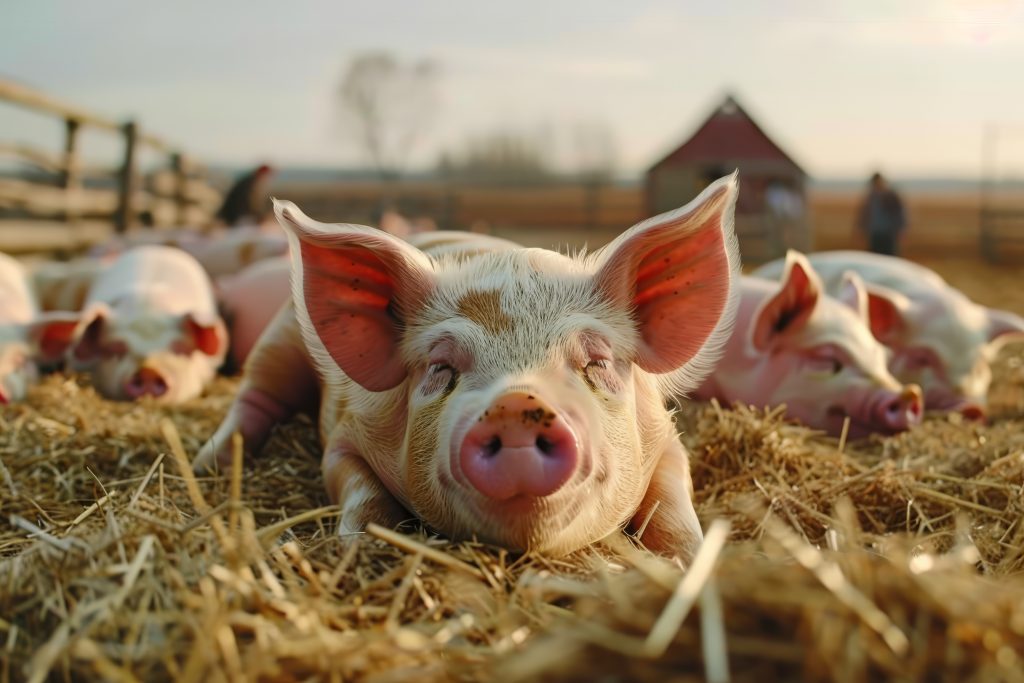Lipid oxidation in animal feed is a significant challenge that impacts not only animal health and growth performance but also the oxidative stability and shelf life of pork meat. While fats and oils are essential components of energy-dense swine diets, their susceptibility to peroxidation raises concerns about the formation of lipid oxidation products (LOPs). These compounds can alter the nutritional and sensory qualities of pork, reducing its marketability and increasing food waste.
Understanding lipid oxidation mechanisms and their relevance in swine diets
Swine diets typically incorporate lipid sources such as vegetable oils, animal fats, or blends of both, not only to enhance energy density but also to improve feed texture and reduce dust. However, many of these lipid sources, especially those rich in polyunsaturated fatty acids (PUFAs), are particularly prone to peroxidation. Additionally, the widespread use of recycled oils, including spent restaurant frying oils, increases the risk of introducing highly oxidized lipids into swine diets.
Lipid oxidation is a complex chemical process in which unsaturated fatty acids react with oxygen, forming primary products like lipid hydroperoxides and secondary products such as aldehydes and ketones. This process is accelerated by high temperatures, exposure to oxygen, light, and the presence of pro-oxidant metals, common conditions during feed manufacturing and storage.
Once ingested, peroxidized lipids may lead to oxidative stress in pigs. Studies show that pigs fed oxidized fats exhibit decreased serum vitamin E levels, an important natural antioxidant, and increased levels of thiobarbituric acid reactive substances (TBARS), a biomarker for lipid peroxidation [1].
Formation and impact of lipid oxidation products during feed processing and storage
The formation of LOPs begins during lipid extraction and continues throughout storage, particularly when oils are exposed to heat, oxygen, and moisture. Feed manufacturing processes such as pelleting or extrusion can further accelerate peroxidation. Peroxide value (PV), TBARS, and p-anisidine value (AnV) are commonly used to assess lipid oxidation levels, though each provides only partial insight into the extent of damage.
Once the oils are processed into feed, further degradation can result in elevated levels of secondary peroxidation products such as hexanal, 2,4-decadienal, and other aldehydes, which are toxic and have been linked to impaired feed intake and immune response in pigs.
The instability of these compounds presents practical challenges. For example, the concentration of hydroperoxides initially increases during oxidation but may later decline due to decomposition, masking the extent of damage. As such, no single assay suffices; combining PV, TBARS, and AnV offers a more accurate evaluation of lipid peroxidation in feed ingredients.
Effects of lipid oxidation products on pork quality, stability, and consumer acceptance
Feeding pigs diets high in lipid oxidation products affects more than just growth performance; it has lasting implications on pork quality. LOPs that accumulate in tissues can continue to react post-mortem, accelerating oxidative degradation of lipids in muscle. This leads to color changes, rancid odors, and reduced shelf life, critical factors that influence consumer acceptance and purchasing decisions.
Studies report that pigs fed oxidized lipids demonstrate reduced average daily gain (ADG), average daily feed intake (ADFI), and gain-to-feed (G:F) ratios by 5%, 3%, and 2% respectively, compared to pigs fed unoxidized lipids [1]. Moreover, oxidative stress in the animal is often evidenced by increased serum levels of protein carbonyls and altered cytokine profiles, indicating an impaired immune function [2].
These systemic changes suggest that the effects of peroxidized lipids are not merely nutritional but involve complex metabolic and immunological consequences. Importantly, these effects do not reverse quickly, even with antioxidant supplementation during the feeding period, highlighting the need for proactive strategies to prevent lipid oxidation rather than attempting to mitigate its effects after the fact.
Nutritional and formulation strategies to mitigate lipid oxidation in swine feed
Preventing the inclusion of oxidized lipids in swine diets is the most effective strategy to protect pork quality. However, complete avoidance is not always feasible, especially in cost-sensitive operations. Therefore, nutritional interventions and feed formulation practices must focus on minimizing the impact of LOPs.
One approach is the use of swine feed supplements such as natural vitamin E (D-α-tocopherol) or plant-based polyphenols. Research shows that vitamin E supplementation increases serum α-tocopherol concentrations and enhances total antioxidant capacity in pigs [2]. While these measures do not fully restore growth performance in pigs fed peroxidized lipids, they do improve oxidative status and may help mitigate damage to muscle tissues.
From a formulation perspective, selecting more stable fat sources, those lower in PUFAs, and including protective antioxidants directly in lipid blends can reduce susceptibility to oxidation during storage and processing.
BTSA’s role in advancing swine feed quality and meat stability
At Btsa, we develop customized antioxidant solutions designed to stabilize lipids, prevent the formation of harmful oxidation products, and oxidative stress in animal nutrition.
Oxabiol® Organic is the first 100% organic tocopherol-based antioxidant on the market. It preserves animal feed products, increasing their shelf life 100% organically, not affect the final product color or smell.
On the other hand, Oxabiol® E, natural vitamin E from non-GMO vegetable oil, can be added to the feed or included in vitamin premixes and nutritional supplements. It protects cell membranes, prevents oxidative stress, intervenes in the development of vital functions, contributes to the optimal functioning of the circulatory system, and strengthens the immune system.
As swine nutrition continues to evolve, Btsa remains a trusted partner for feed manufacturers seeking reliable, sustainable antioxidant solutions for swine feed to manage lipid oxidation and optimize pork quality from farm to fork.
Sources
[1] Hung YT, Hanson AR, Shurson GC, Urriola PE. Peroxidized lipids reduce growth performance of poultry and swine: A meta-analysis. Animal Feed Science and Technology. 2017; 231: 47-58. doi:10.1016/j.anifeedsci.2017.06.013.
[2] Silva-Guillen, Y.V., Arellano, C., Boyd, R.D. et al. Growth performance, oxidative stress and immune status of newly weaned pigs fed peroxidized lipids with or without supplemental vitamin E or polyphenols. J Animal Sci Biotechnol. 2020; 11:22. doi:10.1186/s40104-020-0431-9

